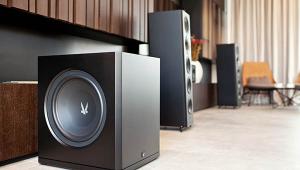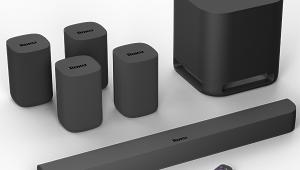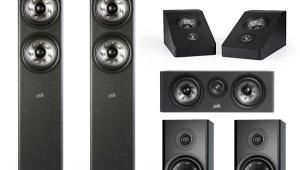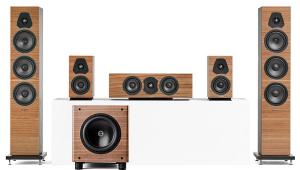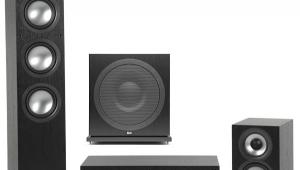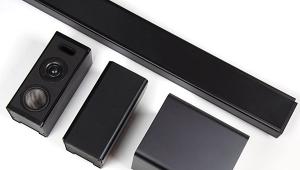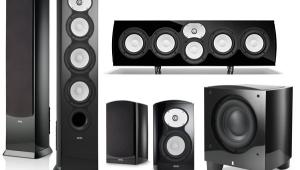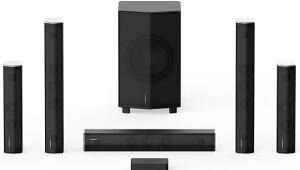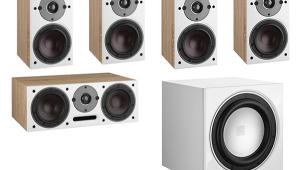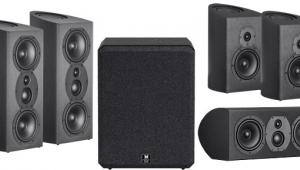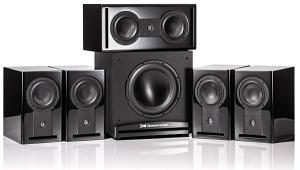HOW MANY READERS DO YOU NEED TO LOOSE? "No Dolby TrueHD or DTS-HD Master Audio decoding" = 0 stars....
Enclave Audio CineHome HD Wireless Home Theater System Review
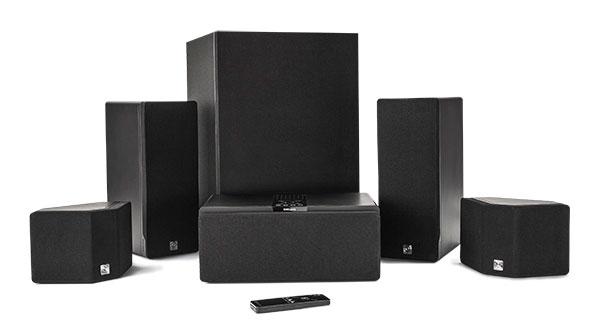
AT A GLANCE
Plus
True surround sound without the wiring hassles
Quick and easy setup
Hi-res wireless audio transmission
Minus
No Dolby TrueHD or DTS-HD Master Audio decoding
Remote is difficult to use
Lots of wall-wart power supplies to plug in
THE VERDICT
By eliminating the hassle of running speaker cables for a 5.1-channel system, the CineHome HD delivers a true, fuss-free surround experience that no single-point soundbar can match. While its feature set is pretty basic, that simplicity will likely be a plus for its targeted customers.
Here at Sound & Vision, we like to think of ourselves as hard-core home theater enthusiasts, so it’s difficult for us to fathom why average people don’t want to jump through hoops to set up a complete 5.1-channel surround system. Sure, you’d need to find space for an A/V receiver and a pile of speakers—plus you’d have to hook up a bunch of wires and thumb through a stack of onscreen menus to get everything properly configured and adjusted—but that’s all part of the fun, right? To be honest, installing and operating a traditional receiver-based home theater can be a bit daunting for someone who just wants good sound, so it’s not surprising that lots of people simply throw in the towel and buy a soundbar.
Designing an audio system that’s simple to set up and use without unduly compromising the sound can be a tricky balancing act. Soundbars are simple indeed, but no matter what kind of acoustic tricks are employed, they never seem to deliver a truly natural surround effect. A traditional home-theater-in-a-box is another simple solution, but that product has nearly disappeared from the marketplace—and anyway, you’d still have to run a lot of wires to get it all connected.
The Enclave Audio CineHome HD aims to keep everyone happy, combining the easy setup and simple operation of a soundbar with the true surround performance of a discrete 5.1 speaker package. The hub of the system is the Smart Center speaker, which sends high-quality audio wirelessly to the rest of the self-powered satellite speakers and subwoofer, making hookup a snap. To avoid the sonic compromises of the more common Bluetooth and Wi-Fi wireless connection protocols, Enclave has chosen instead to use the WiSA (Wireless Speaker & Audio) protocol, a more recent development created specifically for audio, working up in the 5-gigahertz region to deliver (in this case) uncompressed 48-kHz/24-bit hi-res audio signals.
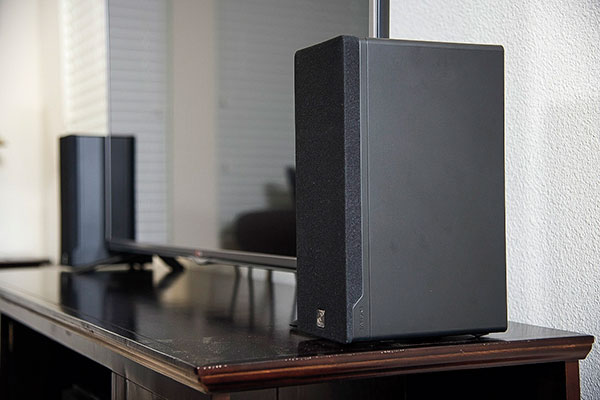
My friend Steve has a running joke about just how many wires most “wireless” systems actually need, and in the case of the CineHome HD, it’s at least six. The main speakers and subwoofer have to get their power from somewhere, and that means each has its own wall-wart power supply to deliver the juice. Enclave has announced plans to introduce add-on battery packs soon, but even then you’ll need to plug them in to charge them. Still, battery packs could be a neat solution if you like to keep your speakers stashed away and out of sight most of the time, pulling them out only occasionally when you want to crank it up on movie night.
Enclave is pretty tight-lipped about some of the basic specifications for the CineHome HD, presumably so people will judge the system based on how it actually sounds, rather than how some numbers add up on a spec sheet. They even make it impossible to remove the speaker grilles, except on the Smart Center, so I had to do some detective work to learn what I could about what makes the system tick.
Acoustically, all three of the front speakers share the same basic vented-cabinet design, with a pair of 3-inch woofers flanking a 0.75-inch soft-dome tweeter that’s mounted in a shallow waveguide. The surround- channel satellite speakers are V-shaped from the front, so that the twin 2-inch drivers are aimed apart at a 45-degree angle in a semi-bipole arrangement. This is done to create a more enveloping surround effect, with the sound reflecting off the side and rear walls of the room. Rounding out the system is a vented subwoofer with a forward-firing 8-inch driver. The sub is made from black vinyl-wrapped MDF.
The main speakers, meanwhile, are made from matte dark-gray molded plastic, which reads a lot cheesier on paper than it looks in real life. It seems that Enclave’s goal, rather than adding some kind of fake wood trim or chrome accents in an attempt to make the speakers look stylish, was to make them as inconspicuous as possible, so they would be heard but not seen.
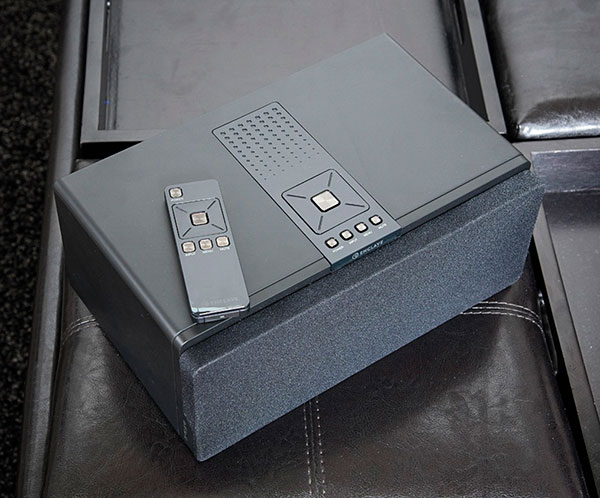
The front left and right and the surround speakers can all be wall- mounted using either a threaded insert or a simple keyhole mount. However, because the Smart Center also carries all of the system’s connections, it needs to sit on a shelf or cabinet under the TV.
Each speaker is driven by Class D amplification of unspecified power. The power supplies draw anywhere from 1 amp (surround) to 3 amps (subwoofer) at 18 volts DC, so it can’t be too much power, but based on the system’s volume capability, it appears that the power is well utilized.
Because the CineHome HD system is designed to be used as a complete package, none of the speakers has any type of standard inputs or controls. Apart from the Smart Center, the back of each speaker has only a power socket for the wall wart and a blue LED that indicates when it’s powered up. One neat touch is the way the Center’s LED works in reverse, becoming very dim when the system is on, so you aren’t distracted by a bright blue light directly under the TV screen.
- Log in or register to post comments

@scheiderbecket Did we read the same article? The system will take Dolby TrueHD and DTS-HD without issue. One simply has to send it in PCM format (Unompressed) from the player to the receiver. The fact that it does not have an onboard decoder is meaningless. Uncompressed audio is actually the highest form you can send, yes even over lossless (but still compressed). Sounds like you're a guy who likes to see pretty labels on things and pay more for them when you dont need to.

